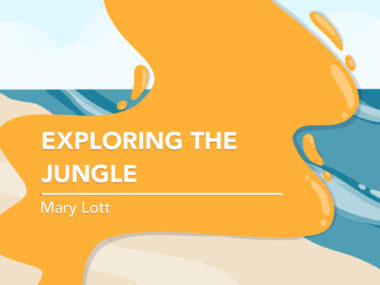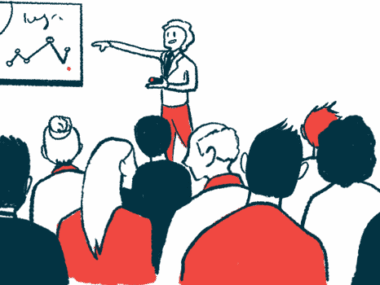Grappling with stealth symptoms of CAD and their consequences
When I hear flawed judgments about my condition, I decide how to respond
Written by |

By outward appearances, I look just fine in an oldish, grandmotherly sort of way. Yet underneath it all lies a stealthy hidden monster known as cold agglutinin disease (CAD). Most of the time, people can’t tell I have it. A now-distant friend once asked me, “Were you always a homebody?” I wanted to deck him!
Before I was diagnosed with CAD in 2018, I didn’t know why I had to stop and catch my breath every few feet as I walked through airports. I budgeted time for these rests when I traveled. The check-in agents had no way to determine if I really needed the requested wheelchair or if I was just being lazy. But I could sympathize with the slender young agent’s struggle, pushing this overweight lady up airport ramps.
When I can, in those cases, I offer to walk up a ramp’s short distance. I’m usually quite winded when we reach the top.
Hidden symptoms and their consequences
The symptoms of cold agglutinin disease include fatigue, pain, mottled fingers and toes, paleness, and heart problems. But most people can’t see that I’m tired. They just know I don’t go hiking.
My breathing, while not a difficulty, is tiresome. Others can’t feel the ache in my chest as I do it. They do hear me coughing periodically, but nowadays, they assume I have a viral lung infection instead of CAD. To avoid the discoloration caused by cold fingers and toes, I wear socks and sneakers and keep my hands in my pockets.
These days, I mostly just stay at home. Someone has judged me harshly for that, telling me all I do is lie in bed, drink my soft drink, and read books. They don’t see the beast lurking within, which makes it difficult.
The challenge for those of us with a very real but hidden disability happens when we encounter people who judge us incorrectly and when we respond to them. That’s why I refrained from clobbering my friend when he asked if I were always a homebody. All he saw was that I declined invitations. He didn’t understand the activity would tax my abilities.
I’ve learned that I must decline many activities. I’ve mostly stopped going to area beaches that don’t require a boat to get there. In those spots around here, I’d have to lug my share of equipment from the parking area to where we’d set up, often a quarter- to half-mile away. It’s easier on my emotions to turn down such trips rather than face my friends’ disappointment when I don’t do my fair share.
I’ve also learned that I can’t attend church in winter. No matter how well-meaning and accommodating the church leaders are, the sanctuary air is usually quite cold. Since there are many blood vessels in the lungs, sustained breathing of cold air causes me to hemolyze, or lose red blood cells.
Giving a soft answer
The above are just two examples of how CAD’s hidden symptoms affect my decisions. And I have other choices to make.
I must accept that people usually don’t have enough information to understand why I live as I do. My response to them is my choice. Inspired by the proverb “A gentle answer turns away wrath,” I usually answer with “I have a blood condition that makes it difficult.” That often suffices.
I expect the airlines to be accommodating when it comes to airport wheelchairs. Sadly, however, some travelers abuse this service. U.S. carriers, generally, put up with that fact, given the Airline Passengers with Disabilities Bill of Rights. Overseas airlines may respond differently, as they operate under a different set of laws. In the instance I describe above, I did walk up a short ramp of about 20 feet. Not doing so would have made the smaller person struggle significantly.
Focus on the positives
I’ve said no to so many activities. I no longer teach because it’s too tiring. I didn’t assist in a retreat because I didn’t have the stamina. I don’t visit my grandchildren during winter. I gave up hiking.
But instead of focusing on what I can’t do, I try to amplify what I can. I write. I draw. I’m an expert in world events. I have more time to study.
The hidden symptoms of cold agglutinin disease are both a blessing and a curse. I find it a blessing that I’m not completely disabled and can try to do what I wish. And I find it a curse because I often wish to do what I cannot.
Note: Cold Agglutinin Disease News is strictly a news and information website about the disease. It does not provide medical advice, diagnosis, or treatment. This content is not intended to be a substitute for professional medical advice, diagnosis, or treatment. Always seek the advice of your physician or other qualified health provider with any questions you may have regarding a medical condition. Never disregard professional medical advice or delay in seeking it because of something you have read on this website. The opinions expressed in this column are not those of Cold Agglutinin Disease News or its parent company, Bionews, and are intended to spark discussion about issues pertaining to cold agglutinin disease.






Leave a comment
Fill in the required fields to post. Your email address will not be published.